Abstract: Economics has long history of “rehabilitations,” including W.H. Hutt’s rehabilitation of Say’s law, and Alfred Marshall’s attempt to rehabilitate David Ricardo. The rehabilitation of Frank A. Fetter should be as important as either of these, especially for economists working in the contemporary Austrian tradition. The historical records reveal that for the last century there has been underway a nearly unbroken series of efforts, especially by Austrian economists, to rehabilitate Fetter’s contributions and use them to revitalize economic theory. This paper relates this history, which chronicles the rise, decline, and rise again of one of the great American economic theorists. Yet crucially, this is not a story about Fetter alone, but also of the
Topics:
Matthew McCaffrey considers the following as important: 6b) Mises.org, Featured, newsletter
This could be interesting, too:
Nachrichten Ticker - www.finanzen.ch writes Die Performance der Kryptowährungen in KW 9: Das hat sich bei Bitcoin, Ether & Co. getan
Nachrichten Ticker - www.finanzen.ch writes Wer verbirgt sich hinter der Ethereum-Technologie?
Martin Hartmann writes Eine Analyse nach den Lehren von Milton Friedman
Marc Chandler writes March 2025 Monthly
Abstract: Economics has long history of “rehabilitations,” including W.H. Hutt’s rehabilitation of Say’s law, and Alfred Marshall’s attempt to rehabilitate David Ricardo. The rehabilitation of Frank A. Fetter should be as important as either of these, especially for economists working in the contemporary Austrian tradition. The historical records reveal that for the last century there has been underway a nearly unbroken series of efforts, especially by Austrian economists, to rehabilitate Fetter’s contributions and use them to revitalize economic theory. This paper relates this history, which chronicles the rise, decline, and rise again of one of the great American economic theorists. Yet crucially, this is not a story about Fetter alone, but also of the fortunes of the Austrian school and its rise, decline, and renaissance.
Matthew McCaffrey ([email protected]) is associate professor of entrepreneurship in the Alliance Manchester Business School at the University of Manchester. This paper is based on the Murray N. Rothbard Memorial Lecture given at the 2021 Austrian Economics Research Conference. I would like to extend my deepest thanks to Joseph Salerno and to the Ludwig von Mises Institute for inviting me to give the lecture, and to Steven and Cassandra Torello for generously sponsoring it. In addition, I am grateful to Robert Fetter for his kind encouragement and for providing me with numerous resources and anecdotes concerning the Fetter family. Sara Goodwin provided outstanding support with the Fetter archives at Indiana University.
JEL Classification: B13, B25, B31, B53, D33, D46
“Among all men of the economics profession that I have known, none has so fully realized my ideal of scholarship without pedantry, intellectuality without pretense, humor without unkindness, and integrity without self-righteousness.”
—Neil Carothers to Frank A. Fetter, 1933
When asked to list Murray Rothbard’s most important contributions to economics, few people think to name his 1977 volume Capital, Interest, and Rent: Essays in the Theory of Distribution. This is understandable, as the book is not an original work of Rothbard’s but an edited collection of papers by a different author. Yet although seldom discussed—and never listed among his major works—this innocuous volume represents a key moment in the history of the Austrian economic tradition and the culmination of a half century of effort by Rothbard and many others to resurrect the ideas of a great unsung economist: Frank A. Fetter.
The life and work of Frank Albert Fetter (1863–1949) should be important to anyone interested in economics, but especially Austrian economics. For fifty years or more, he was the leader of the American branch of the tradition of Carl Menger, Eugen von Böhm-Bawerk, and Friedrich von Wieser, and he played a major role in spreading Mengerian ideas in the United States. He also systematized and extended the work of the older Viennese economists, and in doing so had a profound impact on several generations of their younger students. He was, for example, personally and professionally connected to every major Austrian economist active in the first half of the twentieth century, and often took an active role in promoting their works and careers, and they his (McCaffrey 2019). Moreover, Fetter’s importance was not restricted to the Austrian tradition: he also obtained virtually every professional accolade available to the economists of his day (Howard and Kemmerer 1943).
Despite his importance during his life, however, Fetter is today largely unknown, and receives only a fraction of the attention given to contemporaries like Irving Fisher or John R. Commons. Nevertheless, among a small but growing number of scholars, Fetter’s ideas are playing a more prominent role. It is therefore worth investigating why his reputation declined so precipitously in his later years, and why, so many decades after his death, his work is at last beginning to receive the attention it so richly deserves.
The theme of this paper is rehabilitation, in the sense of repairing a reputation and restoring it to a rightful place of prominence. Economics has a long history of rehabilitations, including W. H. Hutt’s rehabilitation of Say’s law (Hutt 1973), and—significantly for this paper—Alfred Marshall’s attempt to rehabilitate David Ricardo (Ashley 1891). The rehabilitation of Frank Fetter is a far more obscure effort than either of these, but it is my purpose to show that it is every bit as important, especially for economists working in the contemporary Austrian tradition. The historical records reveal that for the last century there has been underway a nearly unbroken series of efforts, especially by Austrian economists, to rehabilitate Fetter’s contributions and use them to revitalize economic theory. It is my aim to relate this history, which chronicles the rise, decline, and rise again of one of the great American economic theorists. Yet crucially, this is not a story about Fetter alone, but also of the fortunes of the Austrian school and its rise, decline, and renaissance.
FRANK ALBERT FETTER (1863–1949)
Frank Fetter was one of many American economists in the late nineteenth century who were trained in German universities by members of the German historical school and whose politics were heavily influenced by early American progressivism (McCaffrey 2019; Leonard 2016).1 Yet he differed from many of his contemporaries in two ways: first, he held many promarket political convictions alongside his more progressive views, and second, he developed a love of economic theory and a strong devotion to the subjectivist economics pioneered by Carl Menger, Eugen von Böhm-Bawerk, and Friedrich von Wieser. Fetter called this approach “psychological,” emphasizing the personal, subjective aspect of value as well as a newer volitional approach to choice, in sharp contrast to the utilitarianism or hedonism of Jeremy Bentham (Coughlan 1965, 80–97).2 In fact, Fetter attributed the first use of the term “psychological” to Wieser (FAF, “The Dead Hand in Economic Theory: Some Uncompleted Reforms and Some Unsolved Problems,” 1940). Among the Americans, his main influence was John Bates Clark, who Fetter believed should have been listed alongside Menger and William Stanley Jevons as the third discoverer of the subjective theory of value (Fetter 1923, 593–94). Fetter and several other economists, especially Herbert Davenport and Irving Fisher, came to be known as the “American psychological school,” by which was meant very nearly the American Austrian school (Dorfman 1949, 360–65), with Clark as honorary founder.
In fact, nowhere outside Austria were the ideas of Menger, Böhm-Bawerk, and Wieser developed further than they were in the United States. F. A. Hayek even recalls that when he was a young student, “the work of the American theorists John Bates Clark, Thomas Nixon Carver, Irving Fisher, Frank Fetter, and Herbert Joseph Davenport was more familiar to us in Vienna than that of any foreign economists except perhaps the Swedes” (Hayek 1992, 32). And among the Americans, none was more consistent or—to use a word often applied to Ludwig von Mises—as intransigent as Fetter.
By any standard, he was one of the most successful economists of his day. His teaching career, which lasted well into his seventies, was spent mainly at Princeton, Cornell, Stanford, and Indiana University, and also included positions at Harvard, Columbia, Johns Hopkins, and the University of Illinois.3 In 1912, he was elected to the presidency of the American Economic Association. As a researcher, he spent the bulk of his career refining and developing the theories of value, price, and distribution along Austrian lines, both in textbooks and in a series of articles published in the leading economics journals. He is especially known for developing original theories of capital, interest, and rent, each of which influenced the Austrians. In the last three decades of his life, Fetter focused mainly on the study of monopoly, especially price discrimination through the basing-point method (e.g., Fetter [1931] 1971, 1948). As a result of his criticism of different forms of monopoly and of the price control and cartelization policies of the New Deal, he eventually took on greater prominence as a public intellectual as well, but he never lost his passion for economic theory, which he continued to explore until his death in 1949. He was in particular a ruthlessly consistent subjective value theorist and an enemy of eclecticism in economics, traits that put him at odds with nearly every important economist of his time, including his friends. Nevertheless, by the time Mises and his students immigrated to the United States, the influence of Fetter and the American psychological school had all but disappeared, replaced in varying degrees by the ideas of economists like Alfred Marshall, Léon Walras, Edward Chamberlin, John Maynard Keynes, and others.
The question, then, is this: If Fetter was indeed such a successful and influential economist, what happened to his work, and why does he need rehabilitation? The answer is that although he was a major force in economics, Fetter’s contributions, just like those of the early Austrians, were never fully incorporated into economic theory and teaching. Again and again his theoretical investigations led him down paths deemed too extreme by his fellow economists, even though his work usually consisted of little more than consistently extending Mengerian value theory. Yet his ideas were continually passed over in favor of more eclectic theories, particularly those that combined elements of classical price theory with insights from the newer subjective-psychological theory.
THE MARGINALIST REVOLUTION
To understand why Fetter failed to exert the influence he deserved, it is necessary to revisit the “marginalist revolution” that began to transform economics beginning in 1871. The more superficial accounts of this era overstate its revolutionary character, and imply that the simultaneous discovery of the new value theory by Menger, Jevons, and Walras triggered the immediate overthrow of classical economics and of cost-of-production theories of value, ushering in the neoclassical era. Yet historians of economic thought have known for many years that this neat and optimistic view is mistaken. The truth is that the marginalist revolution was slow, inconsistent, and incomplete. As Mark Blaug put it, “it was not a marginal utility revolution; it was not an abrupt change, but only a gradual transformation in which the old ideas were never definitively rejected; and it did not happen in the 1870’s” (Blaug 1972, 277; emphasis in original).4
To take one example, Davis Dewey, the managing editor of the American Economic Review, explained to Fetter in a July 26, 1916, letter that he had trouble finding appropriate reviewers for books by the American psychological economists because their views were contrary to prevailing opinion: “I have found some difficulty in getting reviewers for yourself, Davenport, and Fisher. Apparently, the economic fraternity does not like to tackle this trio, due, I suppose, to the fact that its thought seems to run in such different channels that criticism in [sic] aroused” (FAF). Furthermore, as late as the 1920s the subjective theory of value was still met with resistance in the economics journals, and was suffering attacks from Ricardian holdouts as well as new incursions from the rising tide of institutional economics (see, e.g., Fetter 1921, 1923; FAF, “Present State of Economic Theory in the United States of America,” 1926).
Fetter pointed out in many of his works that consistent subjectivism had failed to take hold, and emphasized repeatedly that the promise of the marginalist revolution remained unfulfilled. In fact, for him, “marginalist revolution” was a misnomer: the real revolution was in subjectivism, not marginalism, which was merely one implication of the subjective theory of value:
he term “marginal” is inapt in its suggestion that marginality or finality is the most essential mark of this theory as contrasted with the cost-of-production theory. “Subjective” or “psychological” would much better stress the contrast with that which it displaced…. This feature [marginal analysis] is merely a mechanical, or at best, logical device, far less significant than the broader psychological aspects of the theory. (Fetter 1923, 590n1)Marginalist methods of analysis existed in economics long before 1871, most famously in David Ricardo’s theory of land rent. They had also been pioneered in England by Alfred Marshall, the great eclectic whose work attempted to bridge classical and neoclassical theory, and in America by Frank Taussig, whom Joseph Schumpeter described as the American Marshall (Schumpeter, Cole, and Mason 1941). It was these kinds of works, still infused with cost-of-production theories of value, which dominated economics teaching and theory after the turn of the century.
As a result, the distinctiveness of the subjective value theory pioneered by Menger was lost. It became the conventional wisdom that the insights of the marginalist revolution had been fully integrated into economics, and that there was no need to distinguish between schools of marginalism (Viner 2013, 57–60). The foundations of economics were generally agreed upon, even if there were slight differences of emphasis between economists in different nations. Even Ludwig von Mises endorsed a version of this view (Mises 2007, 19). Fetter did not accept the naïve interpretation, though, and throughout the 1920s and ’30s stressed the distinctiveness and importance of Mengerian value theory as compared to the versions espoused in the textbooks of Marshall and Taussig. As he put it in an unpublished manuscript from the 1920s,
To make the hallmark of the psychological school the marginal utility method, or to group that school with nearly all recent theory … under the title of “the marginal utility school” as is not infrequently done … reveals a gross misunderstanding or no understanding at all of the major issues in value theory since 1870. (FAF, “Overhead Costs,”)
THE DECLINE OF THE AMERICAN MENGERIAN TRADITION
Despite their energy and erudition, the best efforts of Fetter and the American psychological school failed to exercise a lasting impact. There were both personal and professional reasons for this. Personally, controversies among the Americans prevented them from collaborating and presenting a more unified front against competitors. For example, Fetter instigated a rancorous exchange with Herbert Davenport over several issues in economic theory that seems to have destroyed their friendship (Fetter 1914, 1916; Davenport 1916).5 Fetter also debated Irving Fisher on capital, interest, and income, a dispute that began in the early 1900s and continued privately for nearly thirty years, ceasing only when Fisher died (Fetter 1907, 1908; Fisher 1907; FAF, Fisher to Fetter, July 22, 1930, Fisher to Fetter, Aug. 12, 1930). Fisher’s early writings had been more in tune with Austrian work, but drifted into a kind of eclecticism. While this shift likely made his work more palatable to a wider range of economists, it also made it less consistent. Although they remained on friendly terms, Fetter never forgave Fisher for abandoning the pure time preference theory of interest in favor of a partial productivity theory (Fetter 1928b).
Although many of these arguments were based on valid disputes over theory, the damage they caused can also be attributed to a personal failing on Fetter’s part: he could be a savage critic, even to the point of being uncharitable, and once he had latched on to a particular line of criticism, he often found it hard to let go, even in victory. No matter their exact causes, though, these personal and academic conflicts—as well as retirements, deaths, and shifts of research interests—among the American psychological economists effectively decimated the school by the 1920s.6
Yet the problems ran deeper than the personalities of economists. The underlying challenge was that the best and most consistent insights of the Mengerian tradition had never fully taken root in the US, despite the support they received from leading figures such as John Bates Clark. Under the influence of an old guard of economists including Arthur Hadley, Lawrence Laughlin, and Frank Taussig, economic theory in the US remained an eclectic combination of German historicism; the classical economics of Ricardo, Mill, and Marshall; and marginal utility theory (Salerno 2001, 18–20). As a result of this opposition, when the energy of the psychological economists began to dissipate, Fetter was left virtually alone in the battle for economic theory in the United States.
The failure of American audiences to appreciate the uniqueness of the Mengerian tradition was driven home to Fetter repeatedly in the 1920s and 1930s. In 1936, for example, he contributed four chapters on value and price theory to a collaborative textbook on economic principles edited by Walter Spahr. These chapters were Fetter’s last systematic writings on price theory, and represented a state-of-the-art account of the topic at the time. They were explicitly written using the subjective-psychological approach in contrast to the cost-focused Marshallian theory (FAF, Fetter to Vernon Mund, July 5, 1938). Unsurprisingly, they also closely mirrored Böhm-Bawerk’s exposition of the same topics, which Fetter recommended as further reading. Fetter was subsequently invited to revise his chapters in preparation for a new edition of the textbook; however, after he had begun, Spahr unexpectedly rescinded the invitation and entirely removed Fetter’s chapters. As Spahr explained to him in a letter dated July 6, 1939:
A survey of the users of our text by the publisher has revealed that a very large proportion of those who have used our text have not appreciated or perhaps understood your approach to the question of Value and Price. A very considerable number of those who have been using the work have stated that they were discontinuing its use because they preferred the approach to Value and Price which they could find in other works. The publisher is convinced that our work can never be restored in the face of what seems to be a rather prevailing opinion regarding your chapters …
This kind of example—which here is even supported by some quantitative evidence from Spahr’s surveys—goes a long way toward undermining the claim that by the 1930s all of the major insights of the Mengerians had been absorbed by economic theory and teaching, and that it was only in subsequent debates that the Austrians were clearly distinguished from other neoclassical traditions.7 It also shows how even a psychological economist as professionally successful as Fetter was increasingly unable to find a sympathetic audience for his views. In his old age, his fellow economists accorded him the utmost respect even as they disregarded his most profound contributions to the science. Surprisingly, though, several decades of controversy and (in his view, at least) misunderstanding of his work did not blunt Fetter’s enthusiasm for economic theory. Despite his disappointment at failing to convince more economists of the virtues of the American psychological school, he doggedly persisted in efforts to refine its contributions and to give them new life (FAF, “The Dead Hand in Economic Theory: Some Uncompleted Reforms and Some Unsolved Problems,” 1940).
EARLY EFFORTS AT REHABILITATION
Having said something about the rise and decline of Fetter’s influence, the next step is to chronicle the long history of attempts to rehabilitate it. These efforts were led independently by several generations’ worth of Austrian economists at a series of crucial moments in the history of their tradition, particularly when it too was under attack and in decline. Moreover, their ultimate success runs parallel to the resurgence of the Austrian tradition that gained steam in the 1960s.
Neither Fetter nor his students and colleagues were oblivious to the problems of challenging the dominant strands of economic theory. And as the debates of the early twentieth century on topics such as capital, interest, and rent died down and the Marshall-Taussig model of economic theory became clearly established as the dominant force in US economics, it became increasingly obvious that sustaining the Mengerian, psychological tradition would require a renewed effort. In practice, this meant republishing classic works in economic theory and writing new ones, and this is exactly what Fetter and many of his friends and admirers attempted, beginning especially in the 1920s.
Throughout his career, Fetter received countless requests to republish his works as well as produce new treatments of the theory and history of economics. In particular, a persistent theme in his correspondence from the 1920s onward is the scarcity of his published writings, particularly his journal articles on value, price, and distribution theory (see, for example, FAF, Taussig to Fetter, Nov. 23, 1927; O. Weinberger to Fetter, May 27, 1931; Percy Ford to the editor, Quarterly Journal of Economics, June 7, 1932; G. Haberler to Fetter, Feb. 12, 1932; Joseph Dorfman to Fetter, Dec. 12, 1940; H. S. Piquet to Fetter, Feb. 17, 1943; J. J. Spengler to Fetter, Jan. 30, 1946). An especially common request was for a collection of Fetter’s key papers that would help to resuscitate the subjectivist cause in economic research and teaching, especially in response to the triumph of Marshallian price theory and the monopolistic competition revolution. For example, on March 27, 1928, Royal Meeker wrote Fetter that colleagues recommended that he challenge Irving Fisher’s dominance in interest theory by resuming their debate through a reprint of their early articles (FAF). Fetter agreed that the idea was a worthy one, but the project stalled due to his many other professional obligations and the onset of the Great Depression, which made publishing far more difficult (FAF).8 Fetter was continually on the lookout for help to bring his work back into the public eye, and by 1935, it seemed as if he had found it.
NOEL HALL AND THE LSE ECONOMISTS
A significant effort to republish Fetter’s work was undertaken in the mid-1930s by the group of Austrian economists based in London, mainly at the London School of Economics. This group was led by Lionel Robbins and F. A. Hayek at the LSE, along with colleagues from University College London such as Paul Rosenstein-Rodan. The plan was mainly negotiated by another UCL economist, Noel Hall.
Noel Hall, later Sir Noel, was a master’s student of Fetter’s at Princeton in the late 1920s before returning to England, where he earned his PhD and became an influential member of the Robbins-Hayek circle in London. In 1935, Hall traveled to the US to present Fetter with an offer from Robbins and Hayek, “who owe a good deal to your work,” to publish a large collection of his writings relevant to Austrian economics (FAF, Hall to Fetter, April 1935). Fetter quickly agreed, and together they began to draw up a table of contents. The main topics were to be value, rent, interest, and population (FAF, Fetter to Hall, June 4, 1935). This initial project was deemed too long, though, so a somewhat shorter version was agreed upon (FAF, Hall to Fetter, May 9, 1935; Hall to Fetter, June 10, 1935c; Fetter to Hall, June 4, 1935). Hall returned to England with the proposal, yet despite his early enthusiasm, nothing came of the planned volume.
A year later, on September 23, 1936, Fetter wrote to Hall to ask about his progress (FAF), and Hall assured him that despite delays, and even though he was in a “stupid, pathological state” about it, all was well in hand (FAF, Hall to Fetter, Oct. 16, 1936). At this point, however, the project seems to have been dropped. It is not clear exactly why, but personal conflict is the most likely explanation. In late 1935—between contacts with Fetter—Hall quarreled with Robbins over the latter’s plans to found a national institute of economic research in England. Robbins believed Hall had undermined his efforts to fund the institute, and Robbins was furious. Hall had until then considered Robbins a close friend and personal ally, and their dispute deeply disturbed him (Howson 2011, 284–87). They eventually settled their differences, but the damage was done, and “Robbins never trusted Hall again” (Howson 2011, 287). Their working relationship mainly ended, and along with it, the planned Fetter book. Hall attempted to pass it to Paul Rosenstein-Rodan for publication through Allen & Unwin, but it never appeared (FAF, Hall to Fetter, Oct. 16, 1936).
FETTER’S LATER WORK IN SUPPORT OF SUBJECTIVISM
Parallel to this and various other failed efforts, Fetter gradually began to realize that if such a project were ever to come to fruition, he would have to handle it himself. From the early 1920s to the late 1940s, ultimately right up to his death in 1949, he attempted to do just this. The controversy mentioned above over his textbook chapters is one example, but he also undertook a series of other original projects intended to clarify and extend his early work, and to place it in historical context.
For example, in spring 1923 Fetter began writing a book on the history of the marginality doctrine. In the summer of the same year, he also wrote the bulk of a textbook for high school students that he set aside but revised again more than twenty years later, again without finishing. And some years later, in 1931, he revised his own university textbook, but likely due to the onset of the Great Depression, the publisher believed it was not a good time to bring out a new edition, and so this project too was halted. Unfortunately, all three of these incomplete manuscripts were destroyed after his death (FAF, “Frank Albert Fetter Listings/Archives Prepared by FWF,” 1951). As a teacher, Fetter always encouraged his students to learn languages besides English, and he encouraged them to pursue their reading in the original wherever possible. In fact, so great was his enthusiasm that over the course of several decades he wrote a three-volume English-German dictionary with a special emphasis on word roots that he hoped would aid his students in navigating terminology. This work too was destroyed (FAF, F. W. Fetter to Livy, Mar. 30, 1949).
In all these projects, Fetter’s choice of topics was driven by developments in economic theory in the 1920s and ’30s. Two trends in particular captured his attention: the development of the doctrine of overhead costs pioneered by John Maurice Clark, and the monopolistic competition revolution inspired by Edward Chamberlin and Joan Robinson (FAF, “Overhead Costs,” n.d.; “Duopoly Theory versus Antitrust Policy,” 1941). Both had their roots in the work of Alfred Marshall, who in turn had been influenced strongly by the classical economics of David Ricardo. As a result, as Fetter criticized the newer theories, he found it necessary to return to their foundations, and thus to also criticize Marshall and the Ricardian tradition. This turned his attention naturally to the history of economic thought.
From his earliest days as a teacher, Fetter had lectured on the history of distribution theory, and toward the end of his career, he began to think about a more ambitious treatment of the subject. In 1937, he started seriously to consider writing a book on economic terminology, a favorite subject of his (FAF, Fetter to Robert T. Crane, Jan. 23, 1937). It was not until 1941, though, that he was able to draft a detailed book proposal and outline of the work, tentatively titled “The Language of Economics, with Special Regard to Ambiguities and Resulting Fallacies.” The aim of the volume was a historical survey of major economic terms and of the errors in reasoning and policy that resulted from their ambiguity, inconsistency, and abuse. However, he offered the proposal to publishers without success. The Rockefeller Foundation, which had been a major source of funding for economic research in the interwar period, declined on the grounds that it simply did not have the money. Fetter was discouraged and announced his intention to work on other projects (FAF, Fetter to Joseph Willits, 1941).
He then shifted his attention to a different idea, a book on the development of economic thought after 1850, and especially the controversies over value, price, and distribution theory, in which he had taken a leading role. The initial volume he suggested was to be a collection of his most influential and rare papers on economic theory, along with several new contributions to give the project an overall unity (FAF, “The Revision of Economic Theory,” Mar. 23, 1943). This time Fetter was more successful with his proposal, and in early 1943 he arranged to publish the manuscript, which he had titled “The Revision of Economic Theory,” with Princeton University Press (FAF, D. C. Smith to Fetter, Apr. 6, 1943).
Fetter started to put the collection together, but as he worked, he began to alter his vision for the project (FAF, Smith to Fetter, Aug. 18, 1943; see also FAF, B. M. Anderson to Fetter, Mar. 12, 1945). The new manuscript was to include a greater amount of historical material relating to the development of economic theory in the classical period, beginning with Adam Smith. The plan was to use this brief survey as a foundation for discussing the subjectivist neoclassical period, which was to be the main focus. Fetter wanted especially to emphasize the valuable contributions of American economists in the eighteenth and nineteenth centuries, which he thought had been unfairly neglected in the history of economic thought. The more he worked, the more he felt he needed to write about the classical period. He continued to work on this project until his death in March 1949, by which time his ideas, and those of the other psychological economists, had all but disappeared from economics.9
MISES’S PRESERVATION OF FETTER’S WORK
The year 1949 is a crucial one in the history of Austrian economics. In September of that year, a few months after Fetter’s death, Ludwig von Mises published Human Action, which preserved and extended Mengerian economic theory and thereby laid the groundwork for the revival of Austrian economics in the following decades. It was through Mises that Fetter’s reputation survived.
Their published works give no indication that they knew each other, but the archival records reveal that Mises and Fetter had been personally acquainted since at least the 1920s.10 For example, Mises visited Fetter at his home in Princeton in 1926 while on a visit to the United States to survey its economic conditions. Mises was at this time fascinated by business cycle research (Hülsmann 2007, 573–77), and it is not a coincidence that a few months later Fetter published his last extensive study of the problem of interest rates, a paper that later scholars such as Gerry O’Driscoll argue is very Austrian in its approach to interest and business cycles (Fetter 1927; O’Driscoll 1980).
Some years later, Mises, then in Geneva, wrote to Fetter to express his admiration for his work. Mises was at the time drafting Nationalökonomie, the German-language predecessor to Human Action, and he explained that “[i]n these last months I have reread your contributions on the theory of interest. It is my firm opinion that they are more important than any other contribution on the subject since Böhm-Bawerk” (FAF, Mises to Fetter, Feb. 5, 1938). Mises adopted Fetter’s pure time preference theory of interest in his treatises (Mises 1998). Nor was this the only way in which Mises relied on Fetter’s work: he cites him on problems relating to capital, rent, and the democracy of the market (Mises 1998, 262, 631, 271, respectively). Fetter is also remembered fondly in several of Mises’s public writings and speeches as an outstanding teacher without serious peers in the rising generation of economists (Mises 2011; 24; 1974, 172).
In addition to academics, Fetter’s work was also respected by liberal public intellectuals of the 1930s and ’40s, who saw in him a fellow supporter of free enterprise. He was on good terms, for instance, with John T. Flynn, Garet Garrett, F. A. Harper, and Henry Hazlitt (e.g., FAF, Flynn to Fetter, Aug. 29, 1934; Garrett to Fetter, Mar. 30, 1935; Harper to Fetter, July 17, 1945; Hazlitt to Fetter Aug. 26, 1946).11 Hazlitt listed Fetter’s textbooks among the classics of economics, and in his popular writings questioned why economists like Fetter were sidelined from public discussion (Hazlitt 1956, 70; 2011, 772).12
ROTHBARD’S TWENTY-YEAR FIGHT FOR FETTER
It was in the references to Mises’s Human Action that Fetter’s name was discovered by Murray Rothbard, who took an immediate interest and drew extensively on his work in Man, Economy, and State. In fact, Rothbard regarded his own work as filling a fifty-year gap since the publication of the early systematic treatises by Fetter and the other psychological economists (Rothbard 2009, li–liii). His price and distribution theory in particular was thoroughly Fetterian. In addition to carrying forward the pure time preference theory of interest as Mises had done, Rothbard also thoroughly integrated Fetter’s theory of rent into a general analysis of production and distribution (Rothbard 2009, 367–452, 453–508).
It is not an exaggeration to say that Rothbard recognized Fetter’s importance more than any other economist besides Mises, and it was for this reason that he undertook to rehabilitate Fetter by making his work more widely available in its original form.13 Integrating Fetter’s ideas was not enough; Rothbard believed they deserved renewed attention in their own right, even though, in some cases, he disagreed with them. The most effective way to accomplish this goal was to gather Fetter’s papers on distribution theory into one convenient collection that would represent a kind of treatise in its own right. As Rothbard explained to his friend and supporter Richard C. Cornuelle,
[Fetter’s] contributions … to interest theory were enormous, he being the first all-out time-preference economist, and he also contributed a great deal to rent theory. His rent theory I believe to be superior to Mises, who is still under classical influence in this respect, and Fetter’s rent theory permeates my book. Fetter died several years ago, and needs to be resurrected; his journal articles attacking all forms of productivity theory of interest are brilliant. To resurrect Fetter would be a particularly effective part of the neo-Austrian revival under way. (Rothbard 1955a; emphasis added)
What Rothbard did not know was that this exact idea, right down to the table of contents, had already been proposed many times in the past, including by other Austrians. His remarks also help undermine another misconception about the history of the Austrian tradition: that its revival dates to 1974, to the conference held in South Royalton, Vermont, and the awarding of the Nobel Memorial Prize to F. A. Hayek later in the same year. As Rothbard points out, thanks to Mises, the Austrian revival was already getting underway in the 1950s. It would continue to grow throughout the 1960s, culminating in South Royalton rather than beginning with it (see also Salerno 2002).14
In any case, the final book was not an insignificant side project for Rothbard, but the fruit of more than twenty years of effort. His correspondence reveals that he had the idea for the book, and nearly the same title, in 1955—only a few years after Fetter’s death—while he was in the midst of writing Man, Economy, and State. He first proposed the idea to Cornuelle, who was then helping to support Rothbard financially through Cornuelle’s work at the Volker Fund (MNR, Rothbard to Cornuelle, Aug. 31, 1955), though nothing came of the project during this early period (MNR, Rothbard to Cornuelle, Jan. 8, 1956). While he waited for his own project to materialize, Rothbard recommended including Fetter’s work in similar books such as Stephen Littlechild’s reader, Austrian Economics (MNR, Rothbard to Louis Spadaro, Feb. 6, 1977; Littlechild 1990).
Rothbard shopped his book proposal around for many years with a variety of potential publishers. Augustus M. Kelley considered it, for example, probably because the house had also republished Fetter’s book on basing-point monopoly (Fetter [1931] 1971), but Rothbard withdrew the proposal, apparently before a decision had been reached, to publish it elsewhere (MNR, Rothbard to Augustus M. Kelley, July 2, 1975). Eventually the book appeared through the support of the Institute for Humane Studies as a part of the Studies in Economic Theory series edited by Lawrence S. Moss (Fetter 1977). The official publisher of the book, Sheed Andrews and McMeel, was a Catholic publisher, and was far more at home printing the works of Ronald Knox and G. K. Chesterton than the economic theories of an American Quaker.15
The final title was Capital, Interest, and Rent: Essays in the Theory of Distribution. As this indicates, the contents revolve around the central theme of distribution, with special emphasis on capital, interest, and rent. In the preface, Rothbard praised Fetter’s “challenging and original” theories and the “brilliance and consistency of his integrated theory of distribution,” while lamenting “the neglect of Fetter in current histories of economic thought, even by those that are Austrian oriented.” Rothbard also included a lengthy introduction in which he explored the individual papers in detail, pointing out their particular achievements as well as mentioning places where he believed Fetter’s arguments went astray (Rothbard 1977).
Rothbard also strongly emphasized Fetter’s consistency and refusal to compromise:
It may be that the hallmark of Frank A. Fetter’s approach to economic theory was his “radicalism”—his willingness to discard the entire baggage of lingering Ricardianism. In distribution theory his most important contributions are still too radical to be accepted into the corpus of economic analysis. These are: (1) his eradication of all productivity elements from the theory of interest and his development of a pure time-preference, or capitalization, theory and (2) his eradication of everything pertaining to land, whether it be scarcity or some sort of margin over cost, in the theory of rent, in favor of rent as the “renting out” of a durable good to earn an income per unit time. Guided by Alfred Marshall and by eventual retreats toward the older view by Böhm-Bawerk and Fisher, microeconomic theory has chosen a more conservative route. (Rothbard 1977, 23; emphasis in original)
He concluded that, “microeconomic analysis has a considerable way to go to catch up to the insight that we find in Fetter’s writings in the first decade and a half of this century” (Rothbard 1977, 1).
Israel Kirzner expressed much the same opinion in a glowing review of the collection:
Fetter carried forward the radical reformulation of economic theory which had begun with the marginal utility revolution of the 1870’s, but which, at the turn of the century, was still far from being complete. Along with the new insights learned from the marginal utility theorists there remained pervasive and incongruous traces of earlier misunderstandings. These were particularly troublesome in the area of distribution theory, in the treatment of rent theory, interest theory, the concept of capital. Fetter attacked these problems with keenness of insight, with profound clarity of understanding, and with a delightfully lucid literary style…. Not only can the modern reader learn a great deal of the history of modern economics from this volume; these papers also demonstrate how economic theorizing can be engaged in by a master. It is a rare pleasure, these days, to encounter economic reasoning so elegantly presented, so powerfully yet lucidly argued. (Kirzner 1980, 8)16
Given that the collection focuses on fundamental questions of economic theory, and that it does so from an essentially Austrian perspective, it should be considered just as important as the other key collections and research handbooks published in the mid-1970s (several of them in the same book series) that helped give expression to then emerging strands of Austrian research. In fact, the Fetter collection filled some important gaps left by those other collections, which focused on methodological and philosophical issues and on applied topics without exploring much of the core of economic theory: value, price, and distribution (e.g., Dolan 1976; Spadaro 1978).
However, due to its specialized nature, the book sold in limited numbers, and was mainly appreciated by the younger generation of academic economists who had discovered the Austrian tradition in the 1960s and 1970s. One way or another, though, the job was done, and Fetter’s work was once more in a position to influence new generations of economists. And that is exactly what it has done, slowly but surely, for nearly fifty years.
THE FETTERIAN REVIVAL
Rehabilitating Fetter depends crucially on the availability of primary and secondary reference material for scholars to use in evaluating his ideas. Fortunately, there are now several studies of Fetter’s life and work, though only some are readily available. The most concise is Rothbard’s entry on Fetter in the New Palgrave Dictionary of Economics (Rothbard 1987a).17 Jeffrey Herbener surveys Fetter’s contributions in a larger and more detailed account that includes discussions of lesser-known topics in his work such as his views on money and on welfare economics (Herbener 1999). The most comprehensive source is a PhD dissertation by John A. Coughlan on “The Contributions of Frank Albert Fetter (1863–1949) to the Development of Economic Theory” (1965). It is an invaluable source of information about his ideas and professional activities, and devotes considerable space to Fetter’s work on monopolistic combinations. It also includes a bibliography of his published writings compiled with the assistance of his son, Frank Whitson Fetter.18 Although expansive, the dissertation is remarkable for being entirely descriptive: Fetter’s theories and debates are discussed in detail, yet Coughlan makes no attempt to evaluate them independently. In addition to these specialized sources, Fetter’s work is also treated in broader studies of the history of economic thought in America by Wesley Claire Mitchell (1969) and Joseph Dorfman (1949).
Understandably, today Fetter’s work is most prominent in economic research in and around the modern Austrian tradition (McCaffrey 2019). Here, he plays a large role in debates about familiar topics such as capital, interest, and rent (Lewin 1997, 2008; Lynch 2010; Herbener 2011, 2013; Topan and Păun 2013). However, this scholarship is being complemented by studies on entrepreneurship (Salerno 2008; Foss and Klein 2012, 48–50; McCaffrey 2016), the theory of the firm (Lewin and Phelan 1999, 2002), business cycles (O’Driscoll 1980), and monopoly (Salerno 2003, 2004).19
Outside the Austrian tradition, Fetter’s work on capital is receiving renewed attention (Hodgson 2008), as well as his concept of consumer sovereignty (Desmarais-Tremblay 2020). Other scholars are investigating Fetter’s progressive liberalism and his involvement with important figures of the Progressive Era (McCaffrey 2019; Leonard 2016, 164–65; Samuels 1985), factors which set him apart from many past and present Austrians.20 There are also dedicated discussions of Fetter’s interactions with different schools of economic thought (Hodgson 2008; McCaffrey 2019). The Fetter archives at Indiana University make new work in these and many other fields possible, as will the continued publication of his works by the Ludwig von Mises Institute. Lastly, the author is currently preparing a variety of Fetter’s obscure, lost, or unpublished writings for publication.
Fetter would no doubt be enthusiastic about this renewed appreciation of his life’s work. Nevertheless, he was wary about the pitfalls of an uncritical approach to economics and to the history of economic thought. He was especially concerned that his own views had been misrepresented or pigeonholed as derivative of older thinkers:
[A]lthough all my years of systematic economic study were spent entirely under teachers of the German historical school, I was early tagged as an adherent of its foremost antagonist, “the Austrian school,” because of my recognition of the substantial contributions of that school. For the same reason, I was frequently classified as a faithful disciple of John Bates Clark, and that, also, neatly disposed of the matter. Meanwhile, I was vigorously dissenting from some of the views of both friends in theory. Later, the Austrian label was again more frequently applied to me, alternating with “neo-classical,” after that term had taken on a more confused meaning. I have even been called an “institutionalist”—a richly suggestive title which I would gladly accept if allowed to define it as I would like to. I have never been consciously a partisan adherent of any school or sect of economic theory, and have earnestly striven to prevent either pride of personal opinion or a mistaken sense of loyalty to the ideas of any writer or school from dimming my eyes to new ways to truth. I have continued to believe that sharp differences of opinion among economists on intellectual issues is consistent with mutual respect and lasting friendship, and that in such matters the one loyalty is to the search for truth, not to some theoretical hero, living or dead, or to some cult, past or present. (FAF, “The Development of Economic Theory from Adam Smith to John Stuart Mill, n.d.)
Given his own stance on labels and schools of thought, it seems likely that Fetter would approve of the way his works have been treated by contemporary Austrian economists, namely, as sources of great insight, but also as a basis for debate and criticism rather than objects of blind devotion. In that sense, the Austrian rehabilitation of Fetter has given him the fair treatment that he sought in vain throughout his career.
Development of Economic Theory from Adam Smith to John Stuart Mill
Fetter should have the last word on his own rehabilitation. I have already mentioned his last major project, a book on the history of economic thought. At the time of his death, Fetter had completed only about half of this study, namely, the part dealing with classical economics. Nevertheless, it is an impressive work in its own right, a full-length volume titled “Development of Economic Theory from Adam Smith to John Stuart Mill.” It was Fetter’s swan song: one last broadside against the Ricardian tradition and in favor of Mengerian subjectivism. In fact, at the time it was written, it was really the only effort by an economist working in the Austrian tradition to systematically study the history of economic thought from that perspective. And although incomplete, it is full of Fetter’s characteristic wit and insight. It will soon be published for the first time, and will, hopefully, provide the basis for renewed attention to Fetter as an economist.
One point of particular interest is that the book at last gives us an idea of Fetter’s broader view of the history of economic thought. In the first chapter, he explains the history of economics as a series of reactions and revolutions among competing theories of political economy. Each generation proposes a new political economy, which eventually becomes the old political economy before being overturned by some even newer doctrine. Yet Fetter did not subscribe to the Whig theory of history in economics. He recognized that these revolutions can be and often are disastrous for the progress of knowledge, and sadly, the later decades of his life gave him ample firsthand experience of how fleeting and incomplete was the revolution inspired by Menger, Jevons, and Clark. Most economists, indeed, missed this at the time, but Fetter’s dogged support of the subjective theory of value allowed him to see what others overlooked. In this sense, this paper hopes not only to rehabilitate Fetter, but also his view of economics as one of constant struggle and competition.
CONCLUSION
In a sense, the history of economics is a history of rehabilitations. It is tragic that Fetter and others were unable in his lifetime, despite their best efforts, to preserve the progress that had been made in economic theory. Yet the careful scholarship and energy of Mises, Rothbard, and their students means that, however delayed, Fetter’s rehabilitation is being brought to fruition, and his work is becoming foundational for a new generation of scholars. This revival, slow and halting as it has been, runs parallel to, and is a crucial part of, the renaissance of the Austrian tradition.
In the 1920s, Wesley Clair Mitchell confidently remarked that Fetter’s ideas had up to that point provided a basis for “critical evaluation which has been going on for two decades, and which will doubtless continue for years to come” (Fisher et al. 1927). If there is any justice in the history of economics, Mitchell’s optimism will be justified in the twenty-first century in ways that it was not in the twentieth.
- 1. Fetter’s early research around social problems was influenced by the progressive ideology of the day, and likely contributed to his early career success among professional economists. Another factor was his work in support of academic freedom, which began with his resignation from Stanford University in protest of the dismissal from the faculty of the ultraprogressive E. A. Ross. Samuels (1985) shows that Fetter’s defense of Ross was driven by a principled support of academic freedom rather than progressive politics. Nevertheless, Fetter was close friends with Ross and other leading progressive economists such as Richard T. Ely, E. R. A. Seligman, and John R. Commons, the first two being founders of the American Economic Association (AEA). It seems reasonable to suggest that their support played a part in Fetter’s rise through the AEA and may even have influenced his choice of topics for his (quite progressive) presidential address, “Population or Prosperity?”
- 2. Fetter sometimes described himself as a “welfare economist” as opposed to a “price economist.” Price economics, exemplified by the British classicals, investigated only the superficial, pecuniary aspects of economics, and was limited to studying “prices, exchanges, commercial statistics, and financial operations” (Fetter 1920, 737). Welfare economics, however, sprang from psychological theory, and was a more humane endeavor aiming ultimately at social progress through the study of “the relation of men to their environment, social and physical, consisting of the objects of their choice, as affecting their sustenance, their happiness, and their welfare” (Fetter 1920, 737). Welfare in this sense reflected a deep and abiding type of well-being (see Herbener 1999, 136–39). Price economics was essentially a step toward realizing welfare economics.
- 3. See, for example, the achievements and accolades listed in Howard and Kemmerer (1943), whose account is based on information provided by Fetter.
- 4. Numerous accounts question the idea that the marginalist revolution was a quick and decisive transition, or that the marginalists themselves were in agreement about the nature and significance of their contributions. See Jaffé (1976), as well as the papers in symposium on the foundations of neoclassical economics in the July 1990 issue of the American Journal of Economics and Sociology and the papers in symposium on the marginalist revolution in the fall 1972 issue of History of Political Economy.
- 5. Fetter and Davenport exchanged many letters of friendly debate in the early 1900s, but after the publication of their later reviews and criticisms, the correspondence ends abruptly.
- 6. See also Salerno (1999) for more on the decline of the Mengerian tradition in the US and around the world. Like the Austrians themselves, the American Mengerians neglected to build scholarly networks and institutions for the purpose of maintaining and advancing subjectivist economics (Salerno 2002).
- 7. Fetter’s correspondence similarly reveals that in the 1930s and ’40s, if not earlier, it was common for him and his colleagues and students to use the term “Austrian economist” to identify members of an intellectual tradition that was not defined by national borders and included scholars of other nationalities (FAF, E. Zingler to Fetter Apr. 7, 1943).
- 8. A similar fate met a later attempt by Fetter’s former student, Vernon Mund, to produce a collection (FAF, Mund to Fetter, Mar. 27, 1943). Over the years many other people close to Fetter expressed general wishes for a collection of his writings, while still others encouraged him to write a systematic account of economic terminology (FAF J. P. Norton to Fetter, Dec. 12, 1912; J. E. Hamm to Fetter, Aug. 17, 1934) or a history of economic thought (G. A. Steiner to Fetter, July 8, 1937). The sources cited here provide only a small sampling of the requests Fetter received through correspondence, and do not include, for instance, similar requests made to him in person by his friends, colleagues, and students.
- 9. Fetter’s later projects involving the history of economic thought are discussed in detail in McCaffrey (forthcoming).
- 10. They may have met even earlier during one of Fetter’s visits to Vienna before the First World War.
- 11. At this point, Fetter’s work as a public intellectual mainly concerned his opposition to monopoly and special privilege, including New Deal policies, and contained little of his earlier progressive views. These later policy crusades (for such they were in his eyes) likely played a role in diminishing Fetter’s importance among economists. However, this is not to imply that Fetter’s pro–market stance was solely to blame: his refusal to compromise at all on monopoly policy, especially on the issue of price discrimination, was a notable factor also.
- 12. Fetter may have been the person who introduced Hazlitt’s writing to Mises (McCaffrey 2019, 479).
- 13. According to Walter Grinder, Rothbard considered Fetter the second most important economist in the Austrian tradition after Mises (W. E. Grinder, personal communication, Jan. 31, 2018).
- 14. In another letter, Rothbard similarly remarked that, “I think a resurrection of the now practically–forgotten Fetter would give a great spur to the Austrian Renaissance now under way” (Rothbard 1955b).
- 15. I am grateful to Walter Grinder for pointing out to me the publisher’s Catholic roots.
- 16. Kirzner also generously remarks that “[t]he Introduction is a gem in its own right, giving us Murray N. Rothbard, the economist, at his very best. Careful and wide scholarship, perceptive interpretation and keen criticism of Fetter’s contributions, characterize this brilliant introductory essay” (Kirzner 1980, 8).
- 17. Fetter is also featured in Rothbard’s New Palgrave entry for “Time Preference” (Rothbard 1987b).
- 18. Rothbard later included this bibliography in his collection. Though a tremendous achievement, the bibliography overlooks a variety of Fetter’s minor publications, and does not include his unpublished work or the various reprints and collections that have appeared since his death.
- 19. Another more bizarre source on monopoly is the awkwardly titled Three American Economics Professors Battle against Monopoly and Pricing Practices: Ripley, Fetter and Commons: “Three for the People” (Schneider 1998). Although a good-natured attempt to discuss the role of American economists in the monopoly cases of the 1920s and ’30s, the book is unfortunately an incoherent mess, and is, in truth, a vanity press publication.
- 20. Fetter’s work on population has been recognized as ahead of its time despite, or perhaps because of, its progressive, pessimistic, semi-Malthusian character. See his presidential address to the American Economic Association, which has also been reprinted in the Population and Development Review (Fetter 1999).
Tags: Featured,newsletter
 Don’t miss posts anymore!
Don’t miss posts anymore!
Subscribe to our newsletter!
Permanent link to this article: https://snbchf.com/2021/11/mccaffrey-rehabilitation-frank-fetter-2/














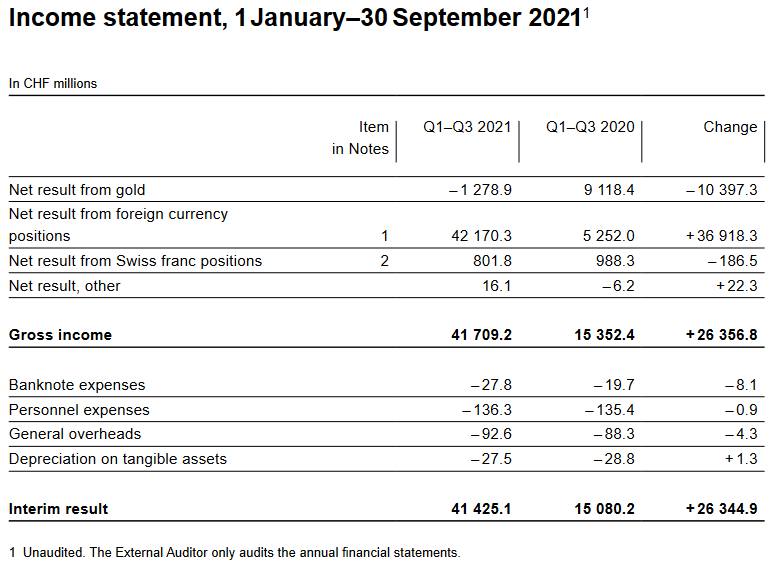

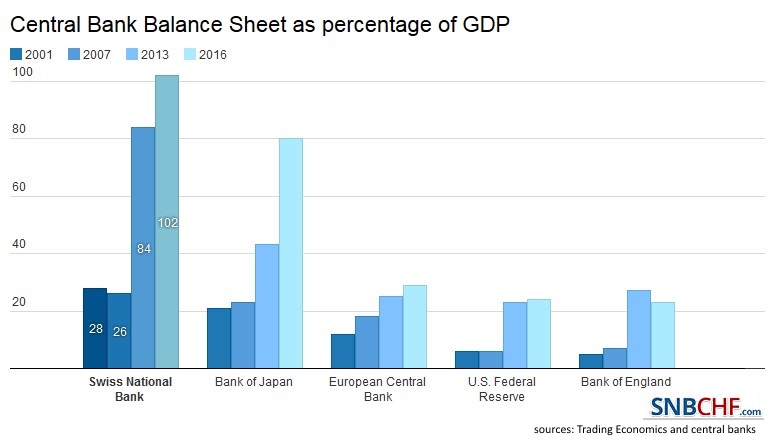



















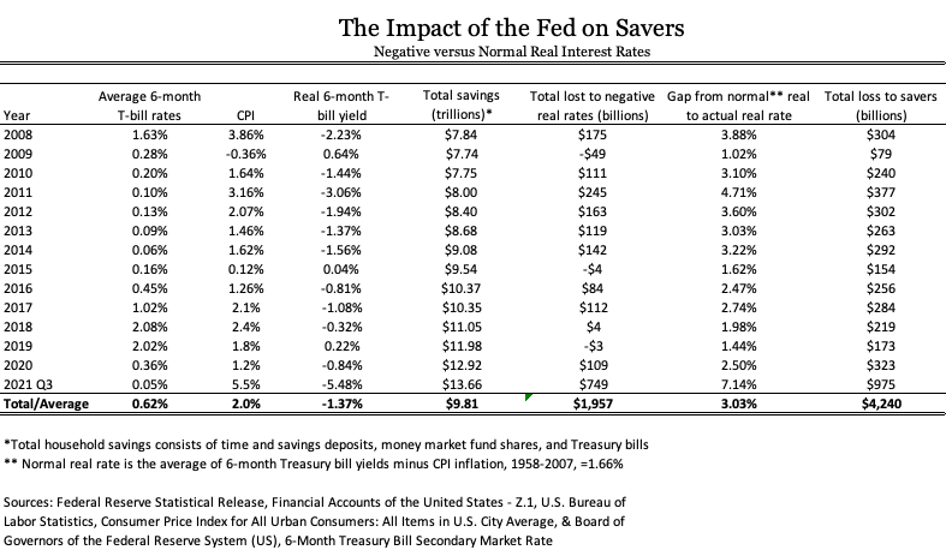
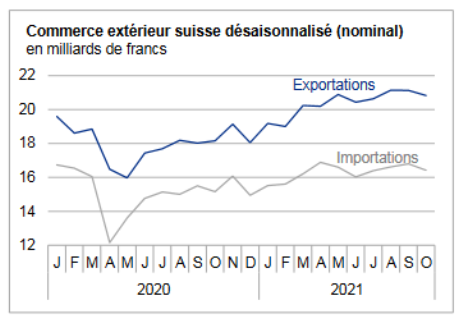
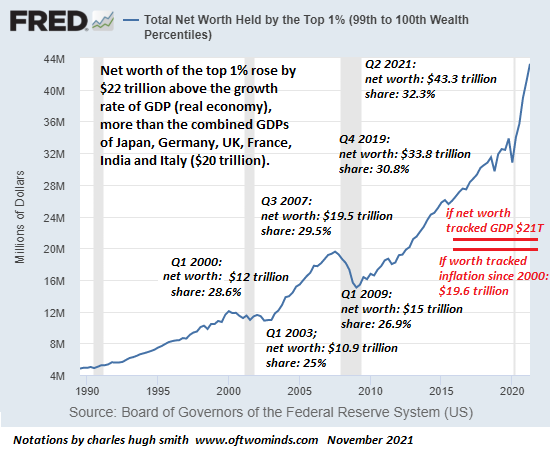
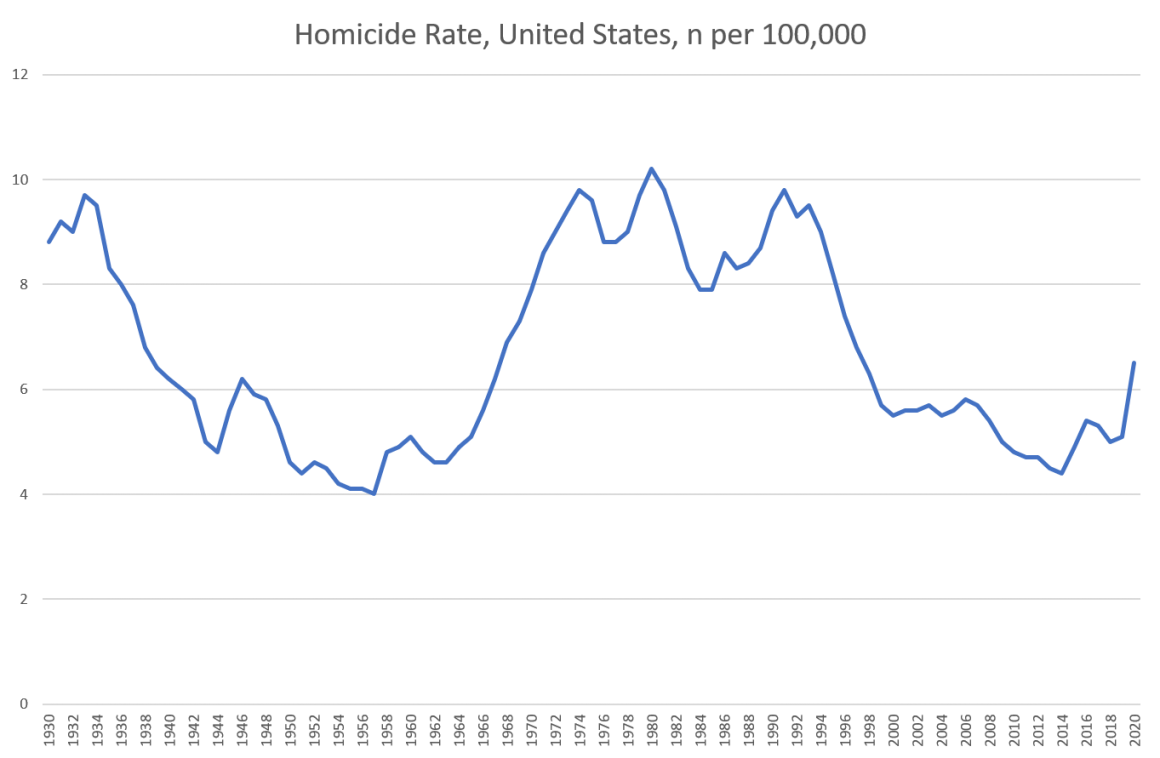

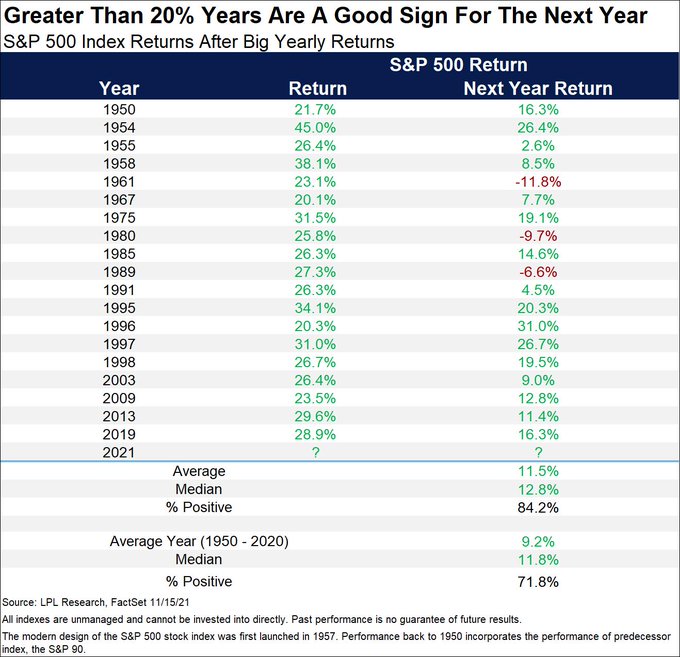

Leave a Reply